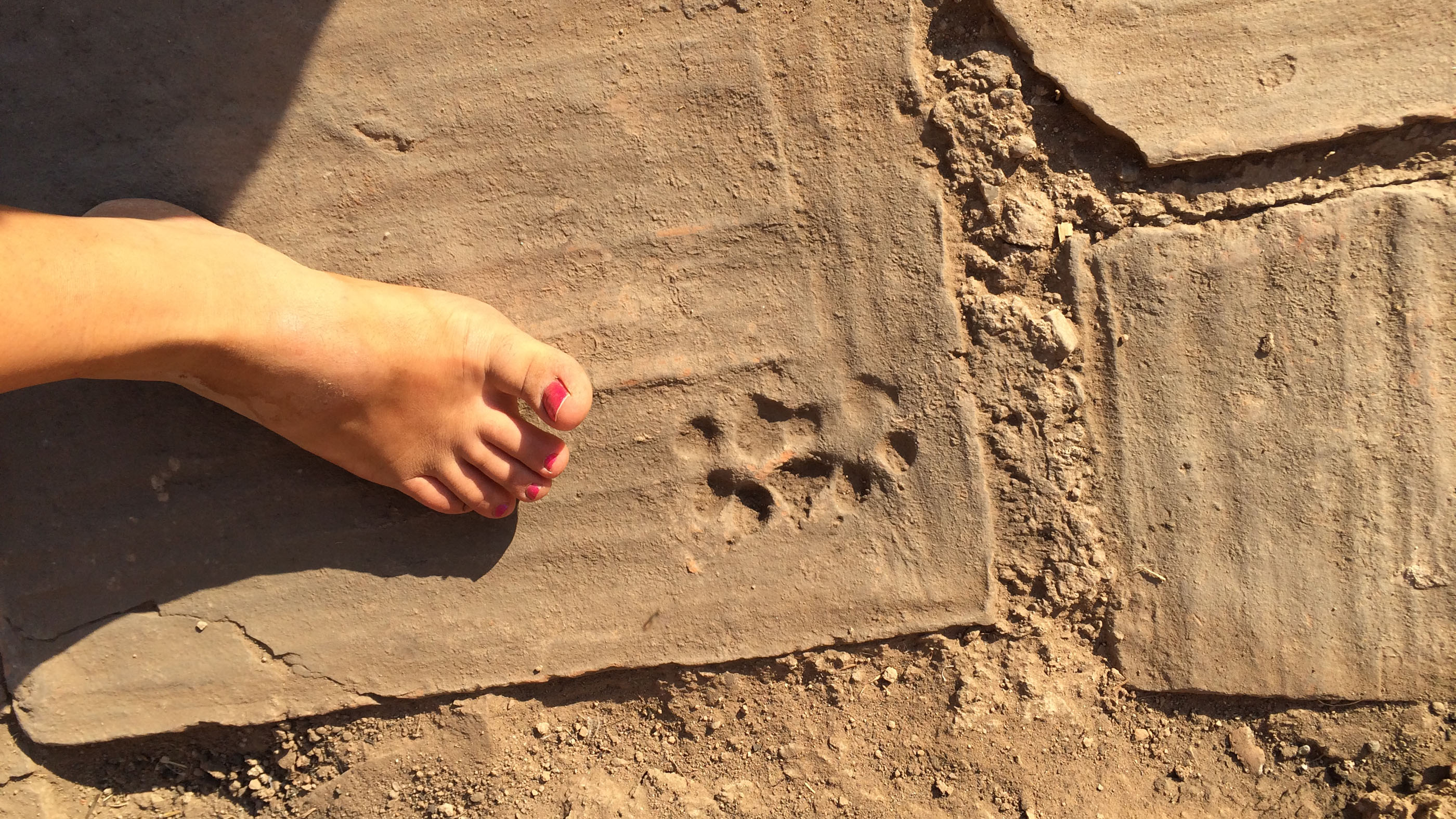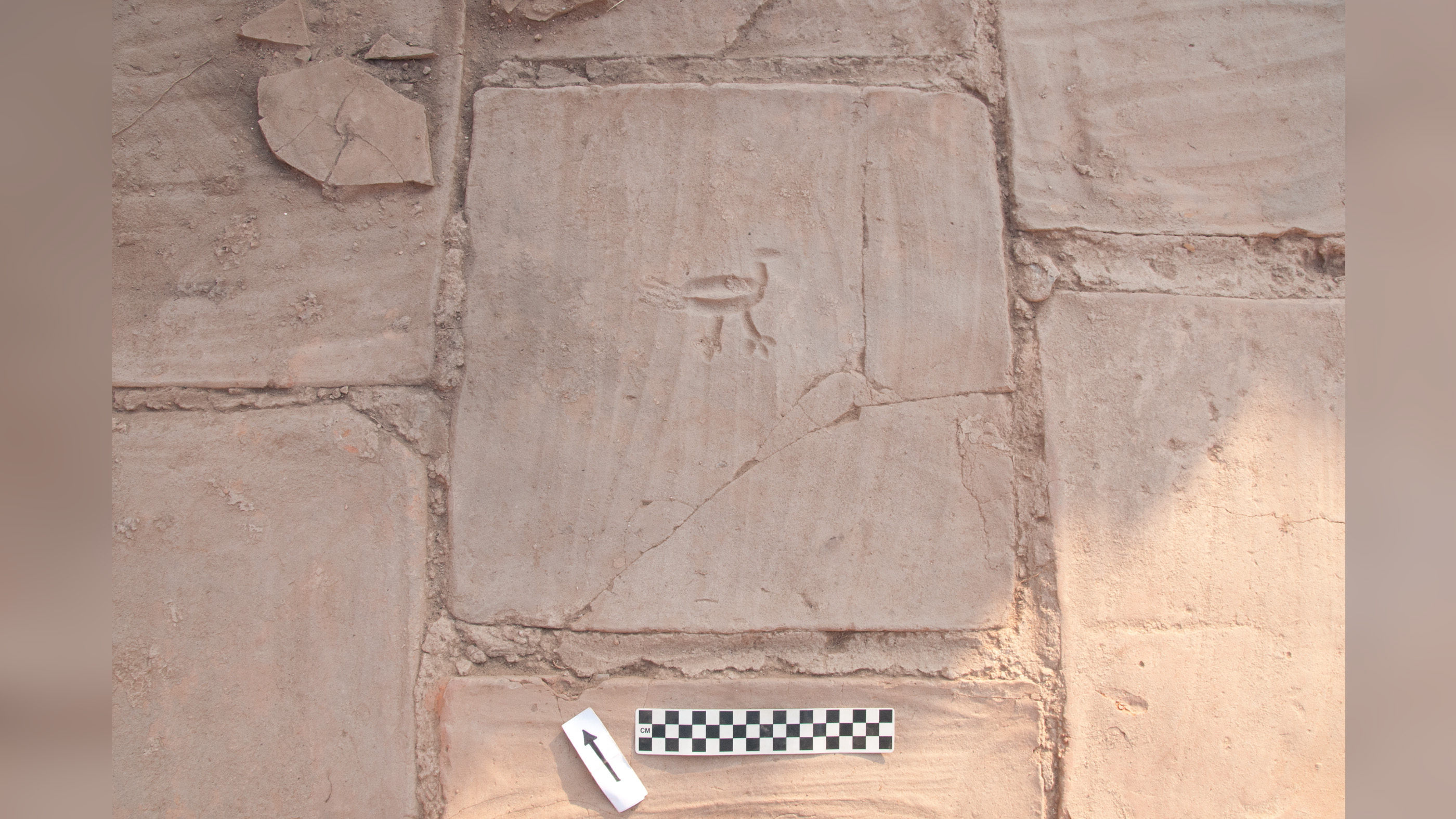Puppy prints and wall illusions found in 1,500-year-old house in Turkey
Archaeologists have discovered a fantastical-looking, 1,500-year-old house in Turkey that was decorated with illusory wall paintings and terracotta tiles on the floor with puppy prints and possible chicken decorations pressed into them.
The house may have been used by people involved with the military, the researchers noted.
"The tiles preserved the paw prints of puppies and in one rare case the hoof print of a goat," Frances Gallart Marqués, a former curatorial fellow at the Harvard Art Museums, said Jan. 6 during a presentation at the virtual joint annual meeting of the Archaeological Institute of America (AIA) and the Society for Classical Studies (SCS).
Related: 24 amazing archaeological discoveries
Perfect Pets: $11.99 at Magazines Direct
"Perfect Pets" is the ultimate guide to the world’s most popular animal companions. Find out what makes dogs man’s best friend, why cats were worshipped in ancient Egypt, plus plenty of other fascinating facts about our furry, feathered — and even some scaly — friends. Inside you’ll learn all about these amazing animals and their unique abilities, plus some top training tips and care guides to help keep your pets happy and healthy.

The animals likely walked on the tiles while they were drying out prior to firing, the researchers said. Drawings depicting what may be chickens or ducks were also found on the floor tiles; "these were finger-drawn before the tiles were fired," Gallart Marqués said.
If the floor tiles were left visible, and not covered up by a carpet, the paw prints and possible chicken decorations would have gone well with the "fanciful" style of the house’s wall paintings, the researchers told Live Science. The wall paintings are painted on plaster and mimic draped curtains and polychrome marble, Vanessa Rousseau, an adjunct professor of art history at the University of St. Thomas in St. Paul, Minnesota, said at the virtual meeting.
The mix of colors and illusions in the paintings combined with the possible chicken decorations on the floor as well as light coming through the windows may have created a fantastic look. One could imagine being "surrounded by the somewhat surreal fakery of painted marble and drapery" with light coming through the windows and "shining on those birds’ marks on the terracotta floor," Rousseau said during her presentation.
Sign up for the Live Science daily newsletter now
Get the world’s most fascinating discoveries delivered straight to your inbox.

While the paintings and puppy prints may be playful, five longswords found in the house raise the question as to whether the inhabitants were involved in warfare. The longswords are "spathae," which are straight swords used by the ancient Romans whose length was usually greater than 20 inches (50 centimeters).
Related: The coolest ancient weapons discovered in 2020
Given that only three other swords of any kind have been found in the excavated parts of Sardis, the discovery of five longswords in this one house is remarkable, the researchers told Live Science. In addition to the longswords, archaeologists also found buckles with designs that suggest they were worn by members of the military, and a lead seal that could have been used to stamp official documents. These finds, together with the house’s central location in Sardis, suggest the people in the house were part of the city’s military or civil authority, the researchers said.
The house was in use for more than 200 years before an earthquake destroyed it during the early seventh century. Excavation by the Sardis Expedition of Harvard University is being conducted with the permission of the Turkish government, and is directed by Professor Nicholas Cahill of the University of Wisconsin–Madison.
Originally published on Live Science.

Owen Jarus is a regular contributor to Live Science who writes about archaeology and humans' past. He has also written for The Independent (UK), The Canadian Press (CP) and The Associated Press (AP), among others. Owen has a bachelor of arts degree from the University of Toronto and a journalism degree from Ryerson University.










